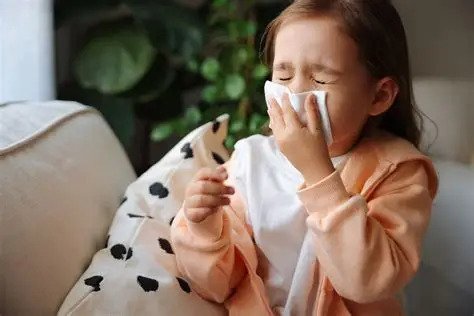World Allergy Day: Protecting Children Through Awareness, Early Detection and Care

The international health community observes World Allergy Day every year on July 8th to increase awareness about allergies and their consequences. The initiative is a joint effort between the World Health Organization (WHO) and the World Allergy Organization (WAO). The primary goals are to raise public and professional awareness, improve understanding of allergic disorders, and advocate for better treatment and resources, especially for children, who are often the most vulnerable.
What Is an Allergy?
The term “allergy” was first introduced in 1906 by Austrian physician Clemens von Pirquet. According to the WHO, allergies are rapidly increasing worldwide. Before the 21st century, about one in four children and one in ten adults were affected. By 2021, allergies impacted one in three people globally.
Despite being among the most common chronic conditions in children, many allergies remain undiagnosed or misdiagnosed for years. Allergies such as eczema, seasonal allergies, and food allergies affect approximately one in four children in the U.S. alone. Symptoms can range from mild to life-threatening if not properly managed.
Anaphylaxis: A Growing Pediatric Concern
In 2025, special attention is being given to anaphylaxis, the most severe form of allergic reaction. Anaphylaxis can develop rapidly, within minutes, and affect multiple body systems, including the skin, respiratory tract, and cardiovascular system. If untreated, it can lead to death.
Key statistics:
- Up to 2% of people worldwide may experience anaphylaxis in their lifetime.
- 5 million cases of anaphylaxis occur globally each year.
- 8,000 deaths are attributed to anaphylaxis annually.
- Only 60% of countries provide access to epinephrine auto-injectors, a crucial life-saving treatment.
- In the UK, nearly one-third of children with severe food allergies lack access to an EpiPen.
- Studies show that 52–60% of at-risk individuals do not carry epinephrine regularly.
Understanding Anaphylaxis
Anaphylaxis is a sudden and severe allergic reaction typically triggered by:
- Foods (e.g., peanuts, shellfish, eggs)
- Insect stings
- Medications
- Latex
It occurs in two phases: an immediate reaction due to the release of histamine and a late-phase response that can worsen hours later.
Common symptoms in children include:
- Skin: Hives, itching, swelling
- Respiratory: Wheezing, throat tightness, shortness of breath
- Cardiovascular: Dizziness, fainting, drop in blood pressure
- Gastrointestinal: Nausea, vomiting, stomach cramps
The Essential “Dos” for Parents and Caregivers
- Administer epinephrine immediately at the first sign of anaphylaxis.
- Call emergency services after using epinephrine, as symptoms can return in up to 30% of cases.
- Educate all caregivers (teachers, babysitters, family members) on how to recognize anaphylaxis and use auto-injectors.
- Consult a doctor for diagnosis and long-term care
- Never delay treatment; early intervention saves lives.
Common Mistakes to Avoid
a. Do not wait for symptoms to escalate; inject epinephrine at the first sign of a severe reaction.
b. Do not rely on antihistamines or steroids alone; they cannot prevent shock or breathing issues.
c. Be ready for a second dose; up to 35% of reactions may require more than one injection.
d. Always carry updated auto-injectors, a written emergency plan, and ensure caregivers are trained.
Beyond Emergencies: Prevention and Preparedness
Managing a child’s allergies goes beyond reacting; it involves daily preparation and education.
- Know your child’s triggers: Read food labels, ask about ingredients, and watch for vague terms like “natural flavors.”
- Create an emergency action plan: Work with an allergist to document symptoms, treatment steps, and emergency contacts.
- Promote allergy education: Advocate for trained staff and allergy-safe practices in schools, daycares, and public areas.
- Support emotional well-being: Anxiety is common in children with severe allergies, support groups and counseling help build confidence.
- Push for better policy: Organizations like WAO and GA²LEN advocate for auto-injectors in public spaces.
- Explore immunotherapy: Under medical supervision, treatments like oral immunotherapy can reduce reactions by up to 90%.
- Consider alternatives: New innovations, like the FDA-approved needle-free epinephrine nasal spray Neffy, may be ideal for children afraid of injections.
Conclusion
Allergies in children can be life-threatening if left untreated. World Allergy Day is a reminder for parents and guardians to get their children tested for any allergies. With proper awareness, access to treatment, and daily vigilance, children with allergies can live safe, and healthy lives.





